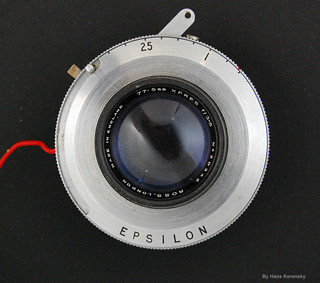Difference between revisions of "Epsilon"
Hanskerensky (talk | contribs) (Added own image of Epsilon shutter as used on a MPP Microcord TLR) |
Hanskerensky (talk | contribs) (Changed "on a MPP.." to "from a MPP.." as the image was taken after i removed it from the Microcord) |
||
| Line 28: | Line 28: | ||
|image= http://farm9.staticflickr.com/8320/7989148760_daf28b9d7e_n.jpg | |image= http://farm9.staticflickr.com/8320/7989148760_daf28b9d7e_n.jpg | ||
|image_align= center | |image_align= center | ||
| − | |image_text= Epsilon Shutter offering eight speeds (1 - 1/300 second) plus 'B' and 'T', <br> | + | |image_text= Epsilon Shutter offering eight speeds (1 - 1/300 second) plus 'B' and 'T', <br>from a MPP Microcord TLR |
|image_by= Hans Kerensky | |image_by= Hans Kerensky | ||
|image_rights= with permission | |image_rights= with permission | ||
Revision as of 19:08, 15 September 2012
This article is a stub. You can help Camera-wiki.org by expanding it.
Epsilon shutters are rim-set leaf shutters made by Barnet Ensign Ross (and the same company under later names) for their own folding cameras, in the late 1940s and 1950s. The same name, usually appearing on the face-plate, below the lens, was used for shutters with at least two levels of specification. The shutters have a cable-release socket, but no delayed action. They are synchronised for flash, with a PC socket. Epsilon shutters also appear on some examples of other British makers' cameras (such as the Kershaw Curlew).
|
|

|
| Epsilon Shutter offering eight speeds (1 - 1/300 second) plus 'B' and 'T', from a MPP Microcord TLR image by Hans Kerensky (Image rights) |

